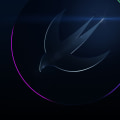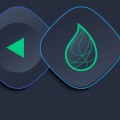Profs online c++ tutors are highly skilled in guiding students through the fundamental concept of control flow in coding, as it allows developers to create complex programs that can effectively manage various tasks. This crucial aspect includes the integration of data and instructions within a program, an area in which Profs online c++ tutors excel. Control flow allows a program to make decisions based on certain conditions, and to take different paths depending on the outcome. For those seeking additional assistance with understanding control flow, there are numerous Profs online c++ tutors who specialize in this topic and are available to provide guidance and support for mastering control flow. These experienced Profs online c++ tutors, specifically trained in teaching control flow, can help you gain a better understanding of its concepts and principles. Whether you're struggling with if/else statements or switch statements, Profs online c++ tutors are here to help you master control flow. With their expertise in the language, these Profs online c++ tutors can help you master the fundamentals of control flow and become a more proficient coder. If you are struggling with understanding control flow, consider seeking guidance from Profs online c++ tutors who specialize in this topic. Profs online c++ tutors are highly skilled in guiding students through the fundamental concept of control flow in coding, as it allows developers to create complex programs that can effectively manage various tasks. This crucial aspect includes the integration of data and instructions within a program, an area in which Profs online c++ tutors excel. Control flow allows a program to make decisions based on certain conditions, and to take different paths depending on the outcome. For those seeking additional assistance with understanding control flow, there are numerous Profs online c++ tutors who specialize in this topic and are available to provide guidance and support for mastering control flow. These experienced Profs online c++ tutors, specifically trained in teaching control flow, can help you gain a better understanding of its concepts and principles. Whether you're struggling with if/else statements or switch statements, Profs online c++ tutors are here to help you master control flow. With their expertise in the language, these Profs online c++ tutors can help you master the fundamentals of control flow and become a more proficient coder. If you are struggling with understanding control flow, consider seeking guidance from Profs online c++ tutors who specialize in this topic.
They can provide personalized assistance and help you improve your skills in this crucial aspect of programming. In this article, we will provide an overview of control flow and explain its various components and how they work together to create a program. We will also discuss the importance of control flow and how it can be used to write effective code. By the end of this article, you will have a better understanding of control flow and how it can be used to create powerful applications.
Selection Statements
Selection statements are an essential part of control flow, allowing the programmer to execute a specific section of code depending on a certain condition.They enable the programmer to make decisions based on the results of a given condition. Selection statements are typically used in if-else statements, where the code will execute one section of code if the condition is true and another section of code if the condition is false. For example, a program may check if a user’s input is greater than 10, and if it is, then it will execute one section of code, and if not, it will execute another section. In addition to if-else statements, selection statements can also be used in switch statements, which are similar in that they enable the programmer to execute a certain section of code depending on a certain condition.
However, switch statements can be used to check multiple values. For example, a program may use a switch statement to check for various inputs and then execute the corresponding code based on the value. Selection statements are essential for creating efficient programs that can make decisions based on certain conditions. They enable the programmer to execute specific sections of code depending on various situations.
Jump Statements
Jump statements are used to break out of loops or skip certain sections of code. They are an important part of Control Flow as they allow a program to make decisions based on the current state of the program. Jump statements can be used to terminate a loop or skip a certain section of code, depending on a certain condition. There are several types of jump statements in programming languages, including break, continue, and return.Break Statement
The break statement is used to exit a loop and continue with the next statement after the loop.It will immediately terminate the loop regardless of the current condition of the loop. It is usually used in combination with an if-statement to test for a certain condition before breaking out of the loop.
Continue Statement
The continue statement is similar to the break statement, however, instead of terminating the loop, it will skip the current iteration and continue with the next one. It is usually used with an if-statement to test for certain conditions before skipping an iteration.Return Statement
The return statement is used to return a value from a function. It will terminate the execution of the function and return the specified value.It is usually used when a function needs to return a value based on a certain condition.
Iteration Statements
Iteration Statements are used when the same set of code needs to be repeated multiple times. By using iteration statements, developers can write code that is more efficient and is not limited to manual repetition. Examples of iteration statements include for, while, and do-while. A for loop is a popular form of iteration statement that is used when the number of iterations is known in advance.It allows for a loop counter to be declared that will increment each time the loop is executed. The syntax for a for loop is similar to that of an if statement, and it consists of an initialization statement, condition, increment, and body. A while loop is another type of iteration statement that is used when the number of iterations is unknown. It relies on a condition that must be met in order to continue the looping process.
The syntax for a while loop consists of a condition and a body, and the body will be executed as long as the condition evaluates to true. A do-while loop is similar to a while loop but with one key difference: the body will always be executed at least once before the condition is evaluated. This ensures that the loop will always execute at least once, regardless of whether or not the condition evaluates to true. The syntax for a do-while loop consists of a body and a condition. Control Flow is an essential part of programming that allows for decisions to be made based on certain conditions.
Knowing how to use Control Flow properly will help the programmer create more complex and efficient programs by controlling the flow of execution of code. Selection statements, Iteration statements, and Jump statements are all used in Control Flow to make decisions, execute code, and facilitate different types of loops. Through proper use of Control Flow, programmers can write code that is more efficient and more effective at accomplishing their goals.











